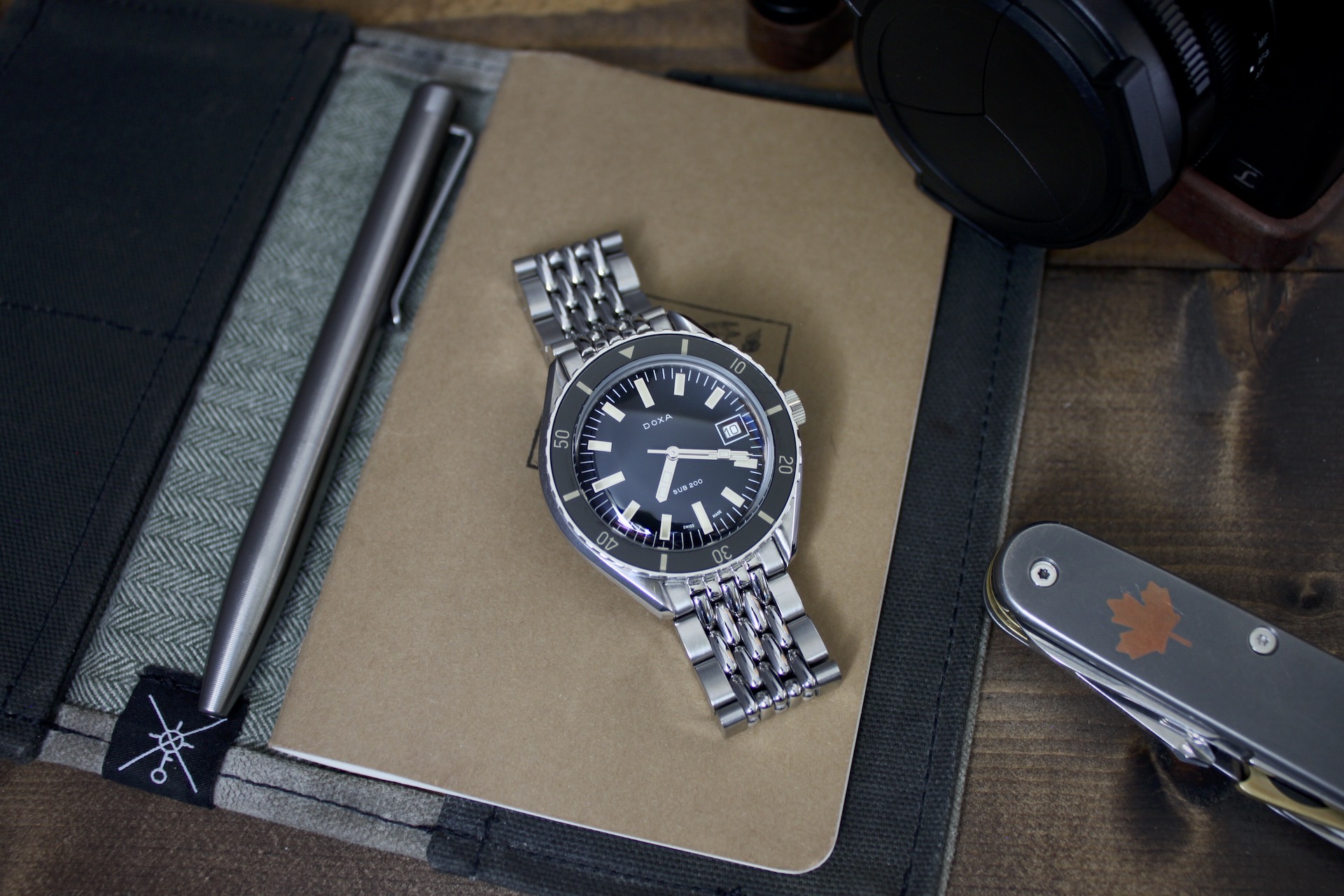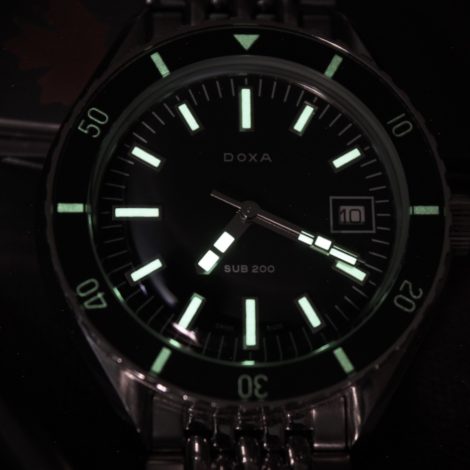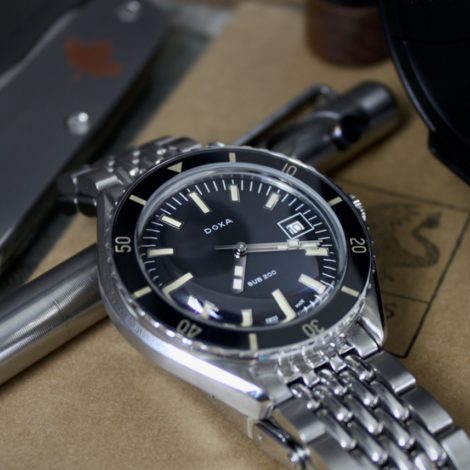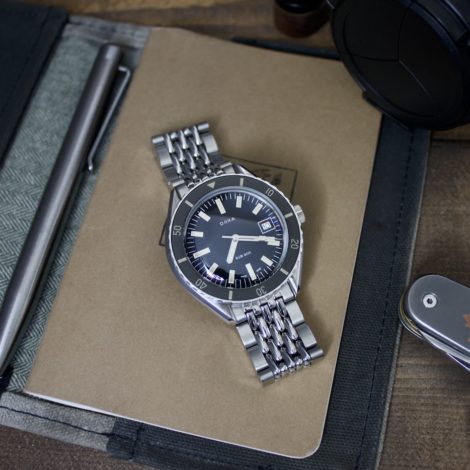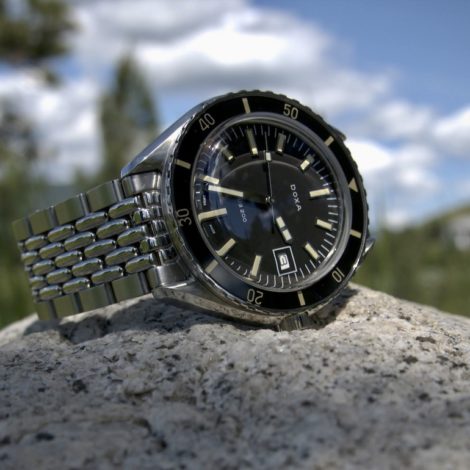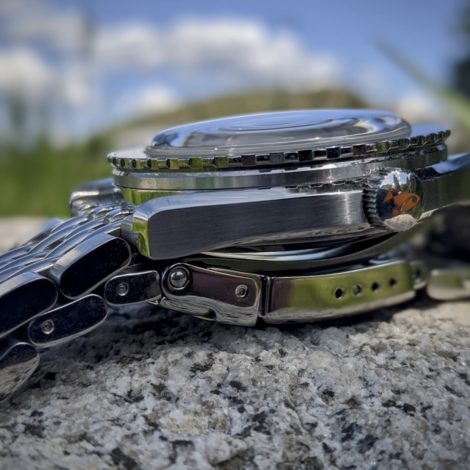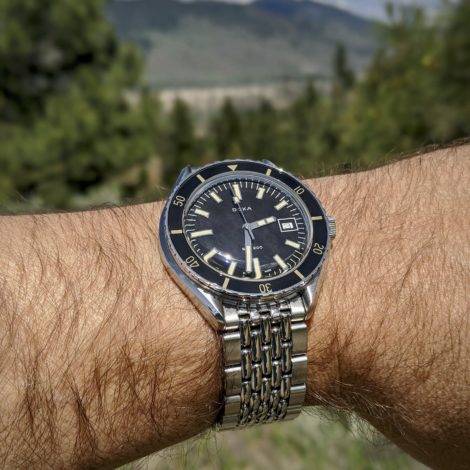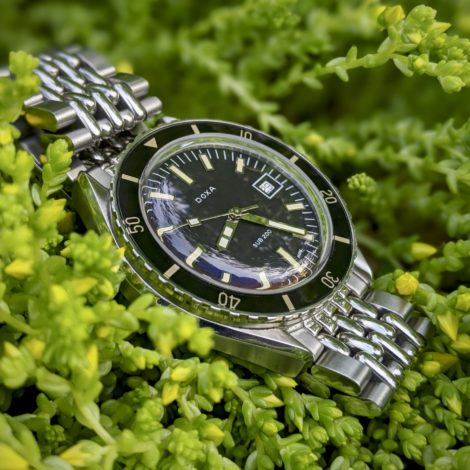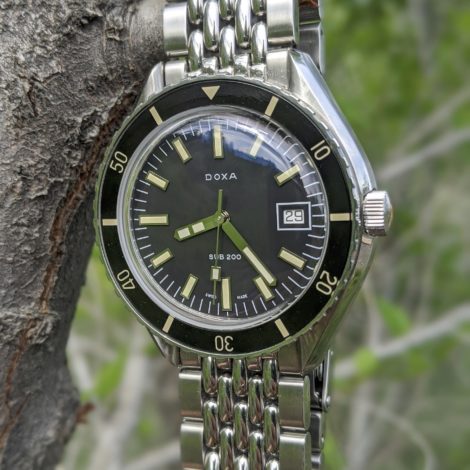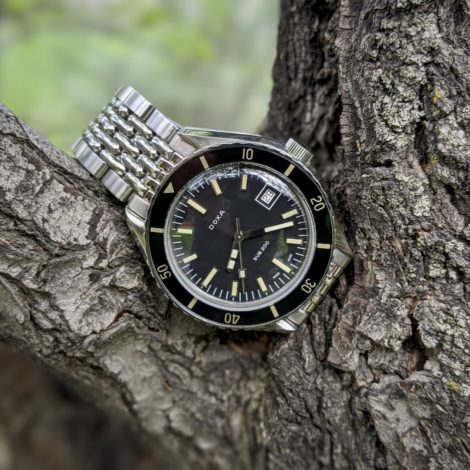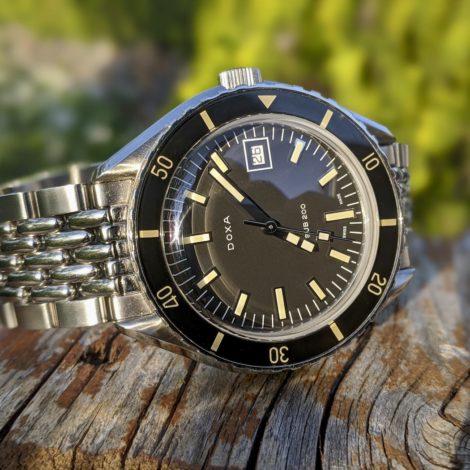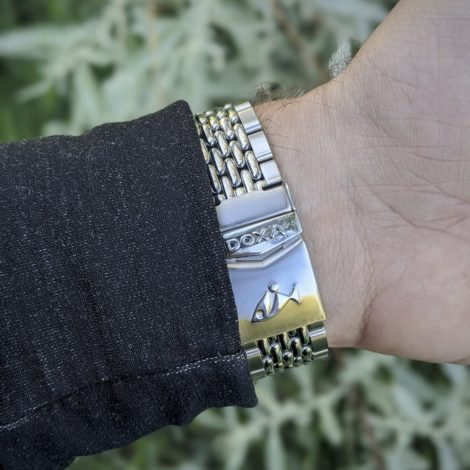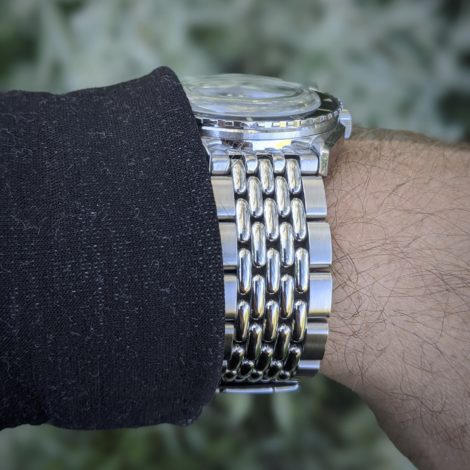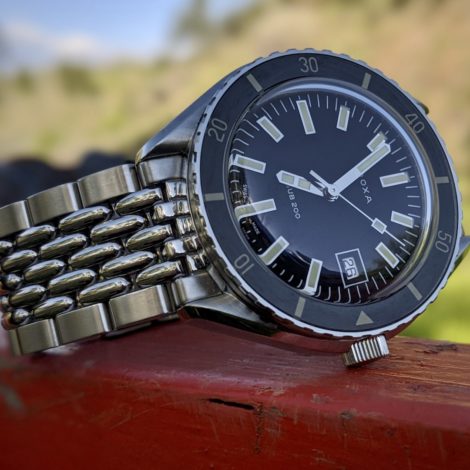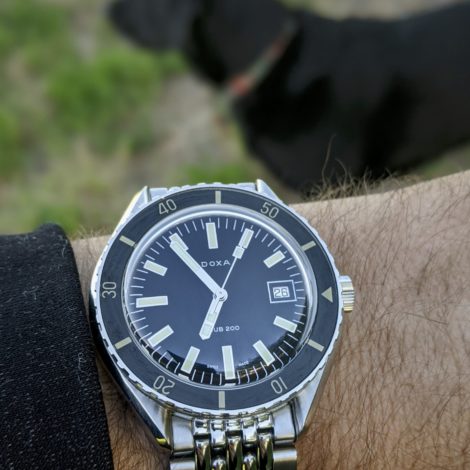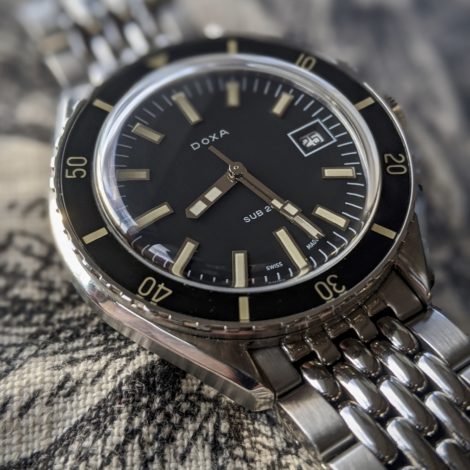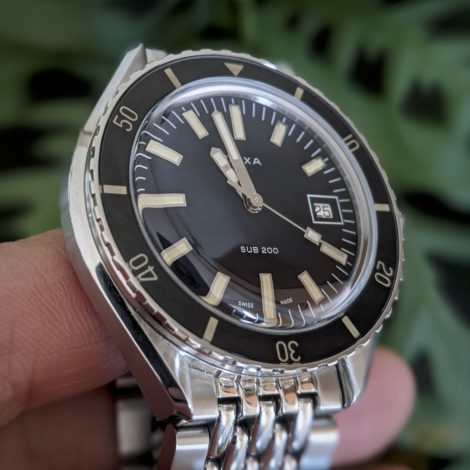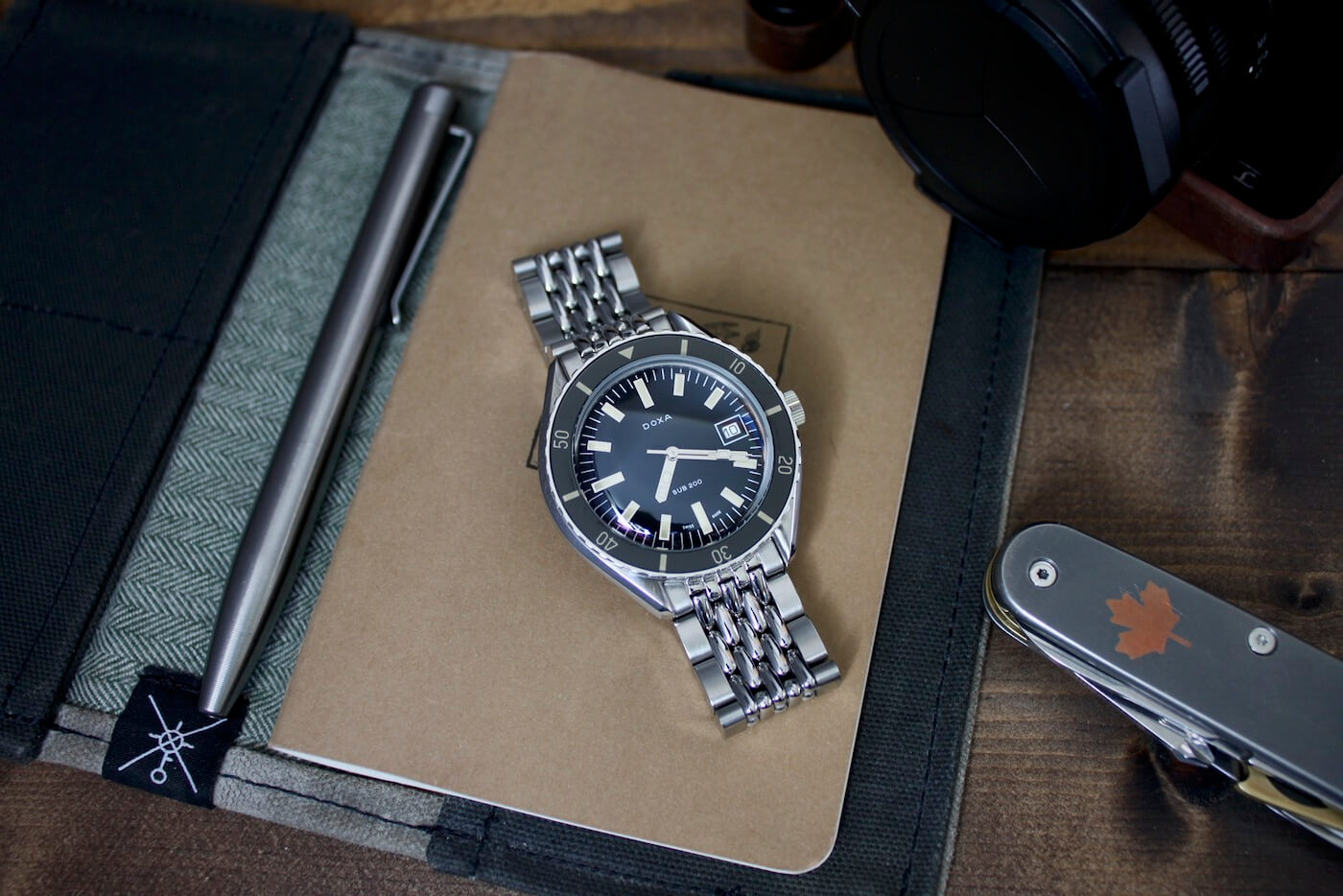
Though Doxa can trace its history back to 1889, its rise in prominence (at least in Western markets) can undoubtedly be traced to the now-iconic orange-faced Sub 300T strapped to the wrists of Jacque Cousteau and the Calypso divers. That broad cushion case, small dial, diver’s bezel with integrated no-decompression dive time calculator, and beads-of-rice bracelet featured on the Sub 300T, and other professional divers in Doxa’s lineup, have become synonymous with the brand. No surprise, then, that the release of the Doxa Sub 200 at Baselworld 2019 took many Doxa fans by surprise.
The Sub 200 is a much more accessible watch, both in terms of price and style, than watches like the Sub 300T, coming in at roughly half the price and featuring an on-trend vintage aesthetic that’s executed (almost) flawlessly. Of course, there were some grumblings from the Doxa die-hards that the Sub 200 was too much of a departure for the brand. Personally, I think that argument is a bit ridiculous. Sure, Doxa is best known for its professional dive watches, at least in North America, but the brand has a long history and vast, diverse catalog (just take a browse through Doxa’s website for Asian markets). The Doxa Sub 200 draws from that archive, producing a vintage-inspired diver that could have been plucked from the halcyon days of scuba diving’s golden era.
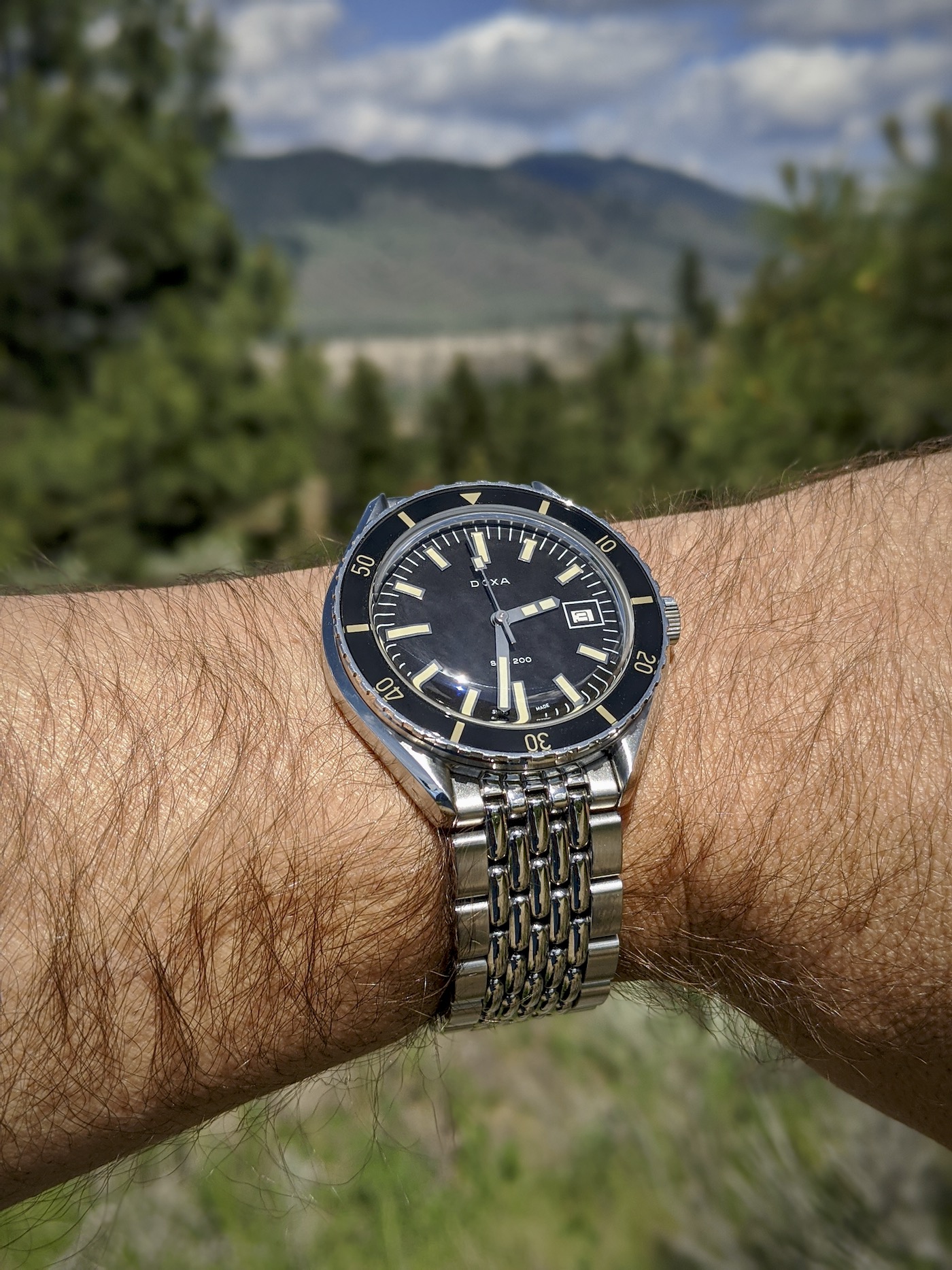
The Doxa Sub 200 is available in a range of colorways, from the classic orange “Professional” to the turquoise “Aquamarine.” I’m reviewing what is, undoubtedly, the most conservative colorway of the bunch, the black-dialed “Sharkhunter.” The model name is something of a misnomer considering that Doxa Watches are advocates for shark conservation (see their co-branded SUB 1200T Project Aware). Though the black and cream colorway may be conservative in the SUB 200 lineup, this vintage diver is in no way lacking in personality or charm.
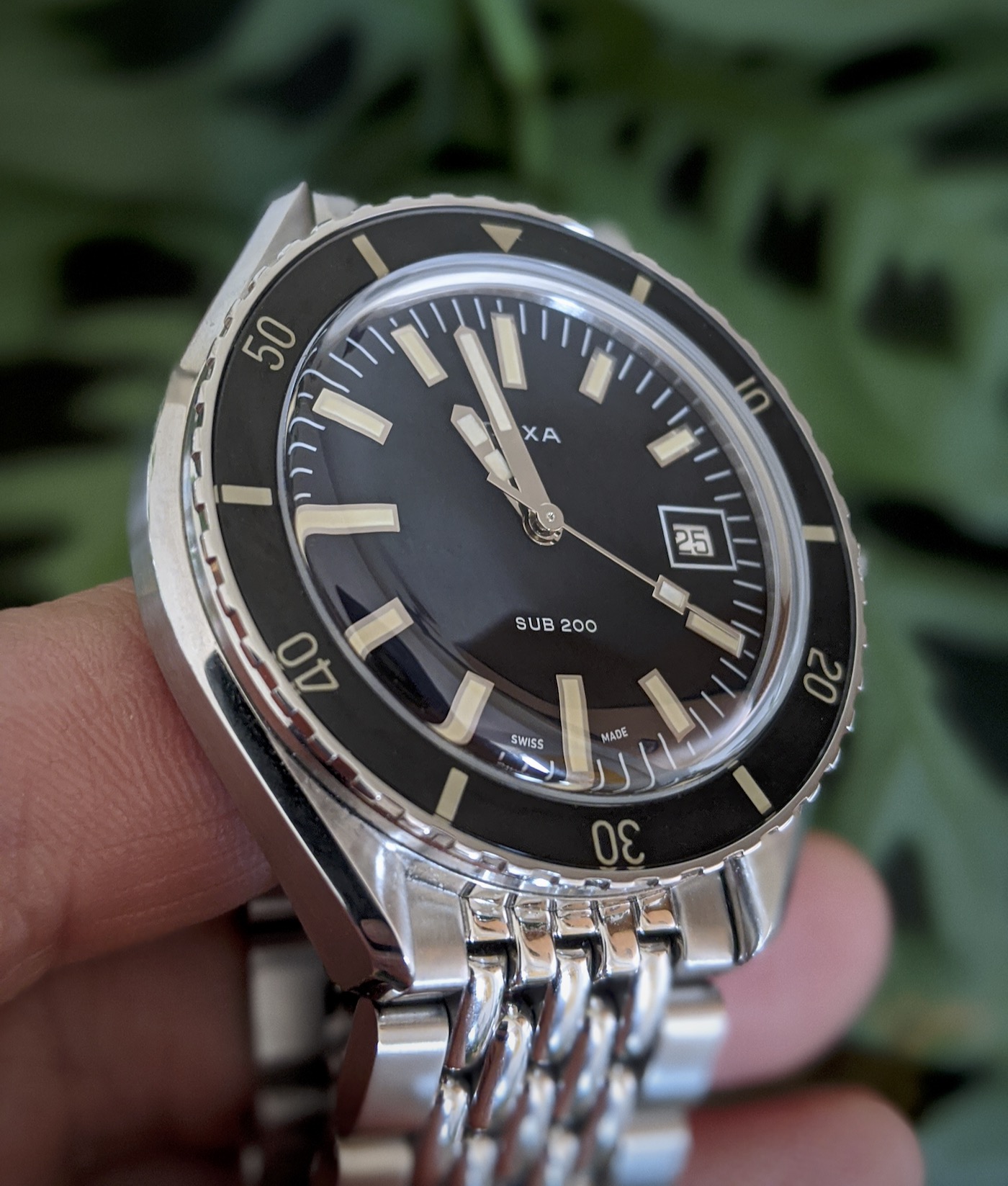
The Doxa Sub 200 case is water-resistant up to 200m, made from 316-L stainless steel, and measures in at 42mm in diameter with a short 46mm lug-to-lug distance and 19mm lug width (seriously, Doxa?). That 42mm diameter is a bit deceptive, though, since the short lugs, coupled with a bezel width that is slightly smaller than the case, give the Sub 200 a dusting of the Seiko magic that makes the Sub 200 wear smaller and more comfortably than its size would suggest. I’d say it wears more like 40mm on my 6.75” wrist. Since this watch arrived in the mail for review, it’s hardly left my wrist, and though the aesthetics certainly play a big part in wanting to strap it on in the morning, the dimensions, fit, and comfort keep it on my wrist all day. It’s the type of watch that’s easy to just grab and wear, knowing it will go with almost anything in my wardrobe, stand up to whatever these summer days may throw at it, and be comfortable on my wrist all day.
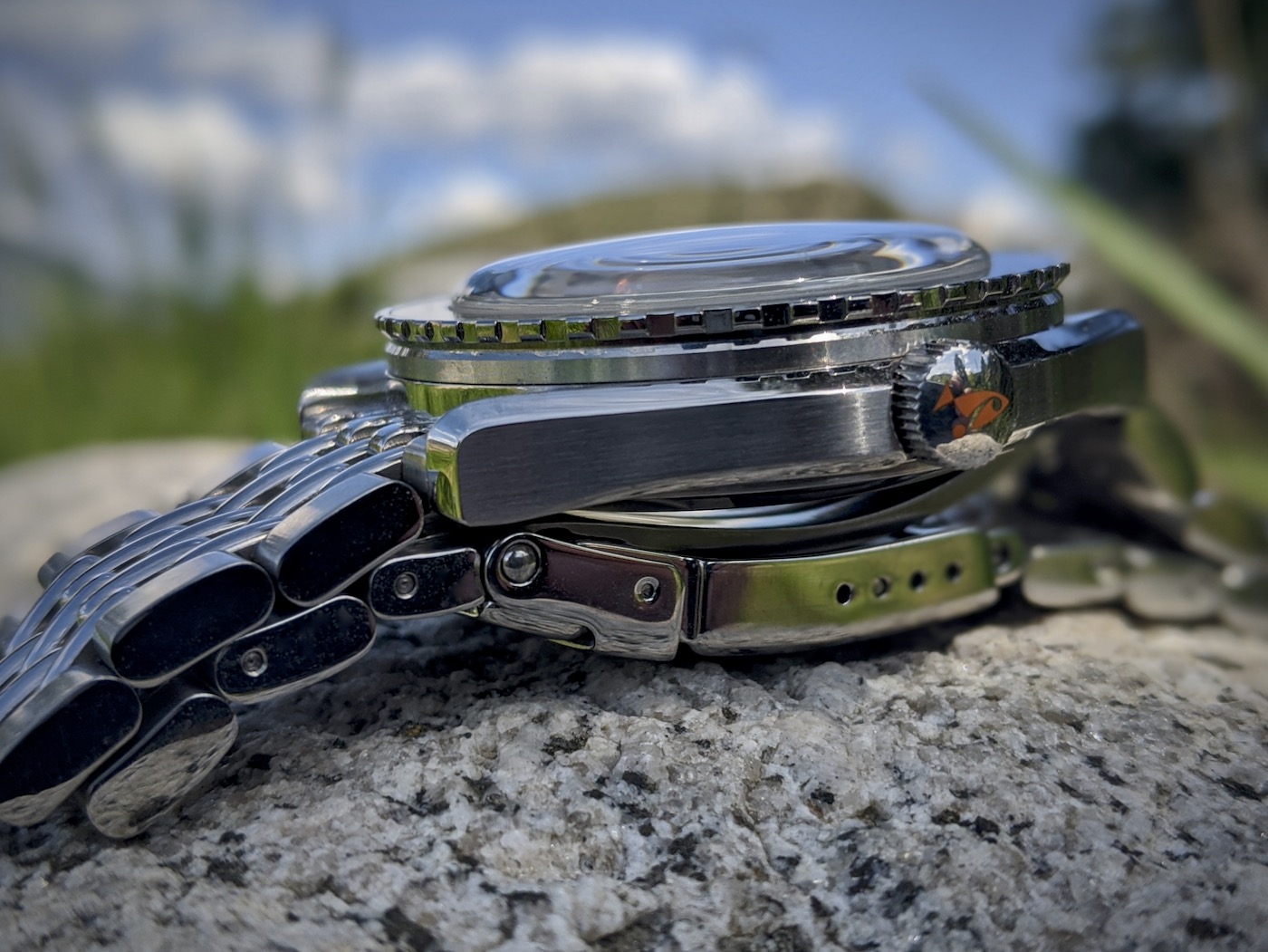
The case dimensions are great, and the comfort is excellent, but the lines of the case are what really make the watch pop. The actual case shape is conservative (by Doxa standards), but the brushed mid-case with a wide, high-polish sloping bevel running from lug-end to lug-end gives the watch a refined, finished look that also helps reduce the visual heft of the 42mm case. It’s a gorgeous case, with finishing that belies its price.
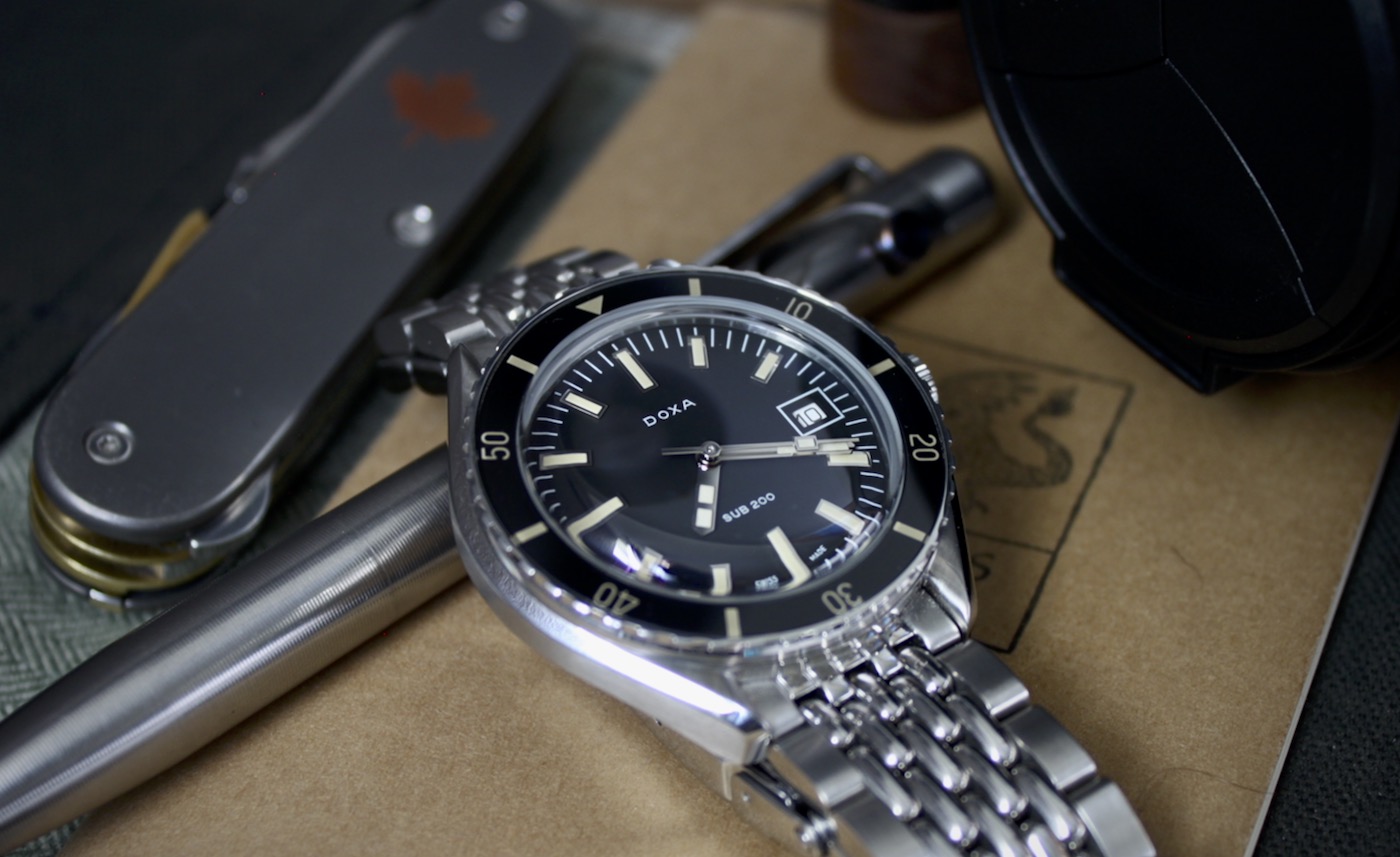
Keeping with the vintage theme, the SUB 200 foregoes crown guards and instead utilizes a stout, screw-down crown that is slightly inset into the mid-case. The crown is signed with a painted Doxa orange fish logo — a design choice I don’t love. I see where Doxa was coming from since orange is the brand’s signature color, but it doesn’t work on this colorway or, I would argue, any other colorway than the orange “Professional” model. It’s easy to ignore and isn’t noticeable on the wrist, but it remains a head-scratcher.
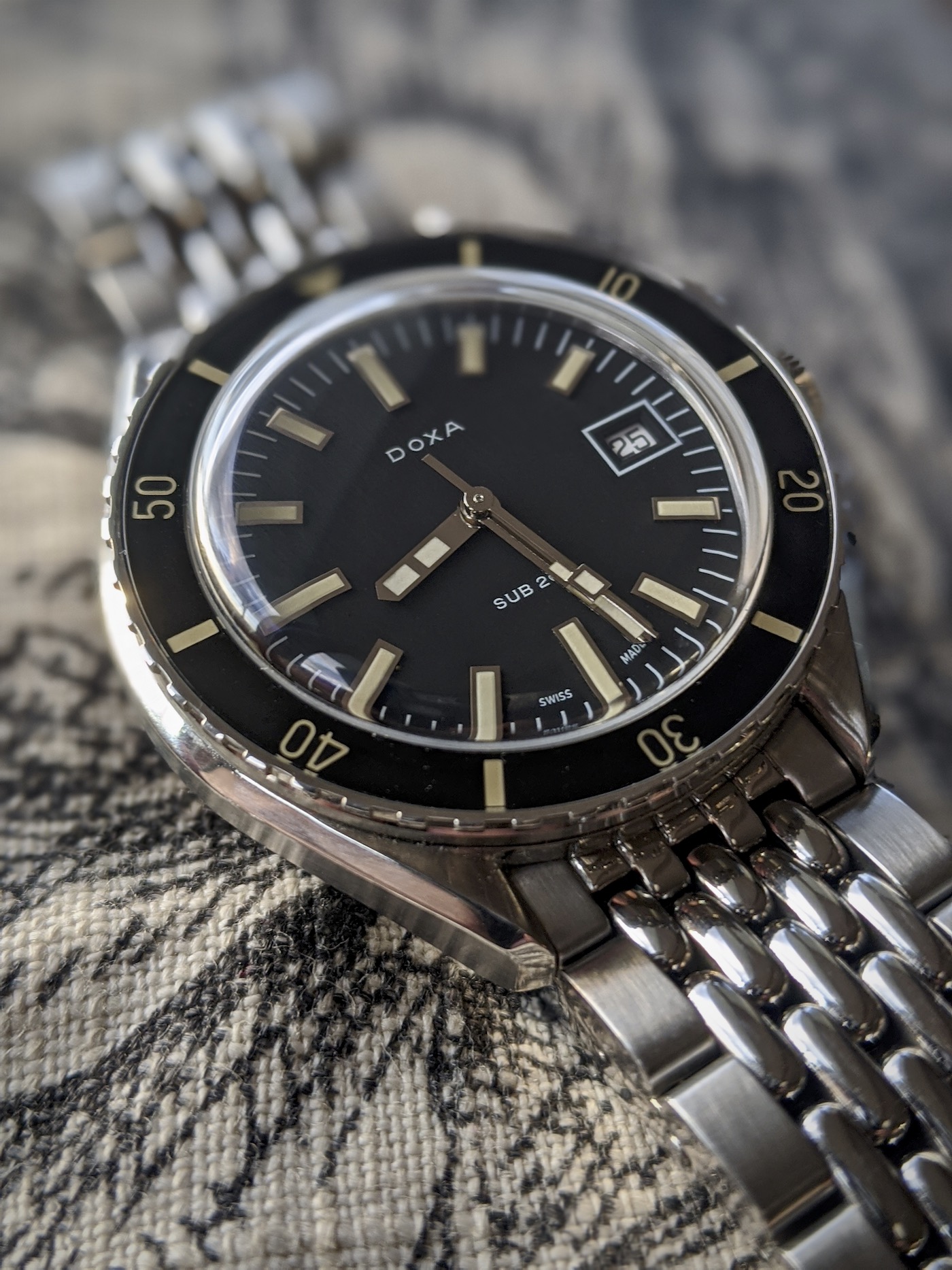
Moving on to the dial, the “Sharkhunter” colorway features a black dial and bezel with creamy, off-white “fauxtina” markers and hands. For some, the use of faux-aged lume is going to be an instant turn-off, but, at this point, I view the use of faux-aged lume as simply a different colorway and one that works well on a vintage-inspired piece. The Super-LumiNova used on the SUB200 hands and markers is adequate, but that’s about it, and the lume on the bezel markings is weak and short-lived.
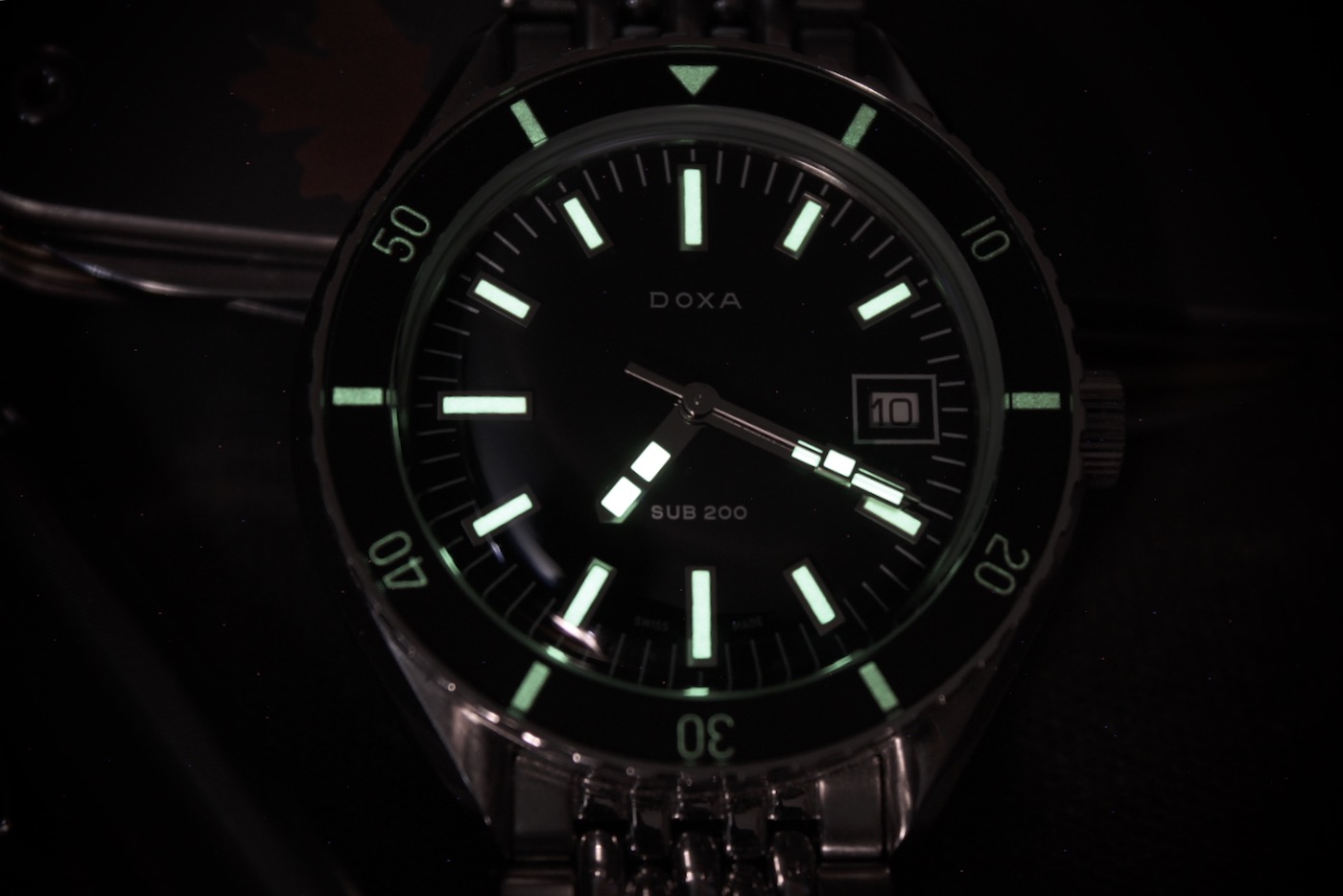
Hour markers are applied with high-polish surrounds that are an ideal complement to the handset. It’s the little things that make or break a dial, and the marker sizes, hand lengths, and overall proportions are spot-on. The one jarring element is the white date window. It’s a stark contrast to the soft, creamy tones that dominate the dial. Though the minute markers, dial text, and frame of the date window are true white, the date wheel still comes across as too stark a contrast. I would have preferred a black date window with white text. A no-date option would also suit this watch and maintain the symmetry and vintage style.
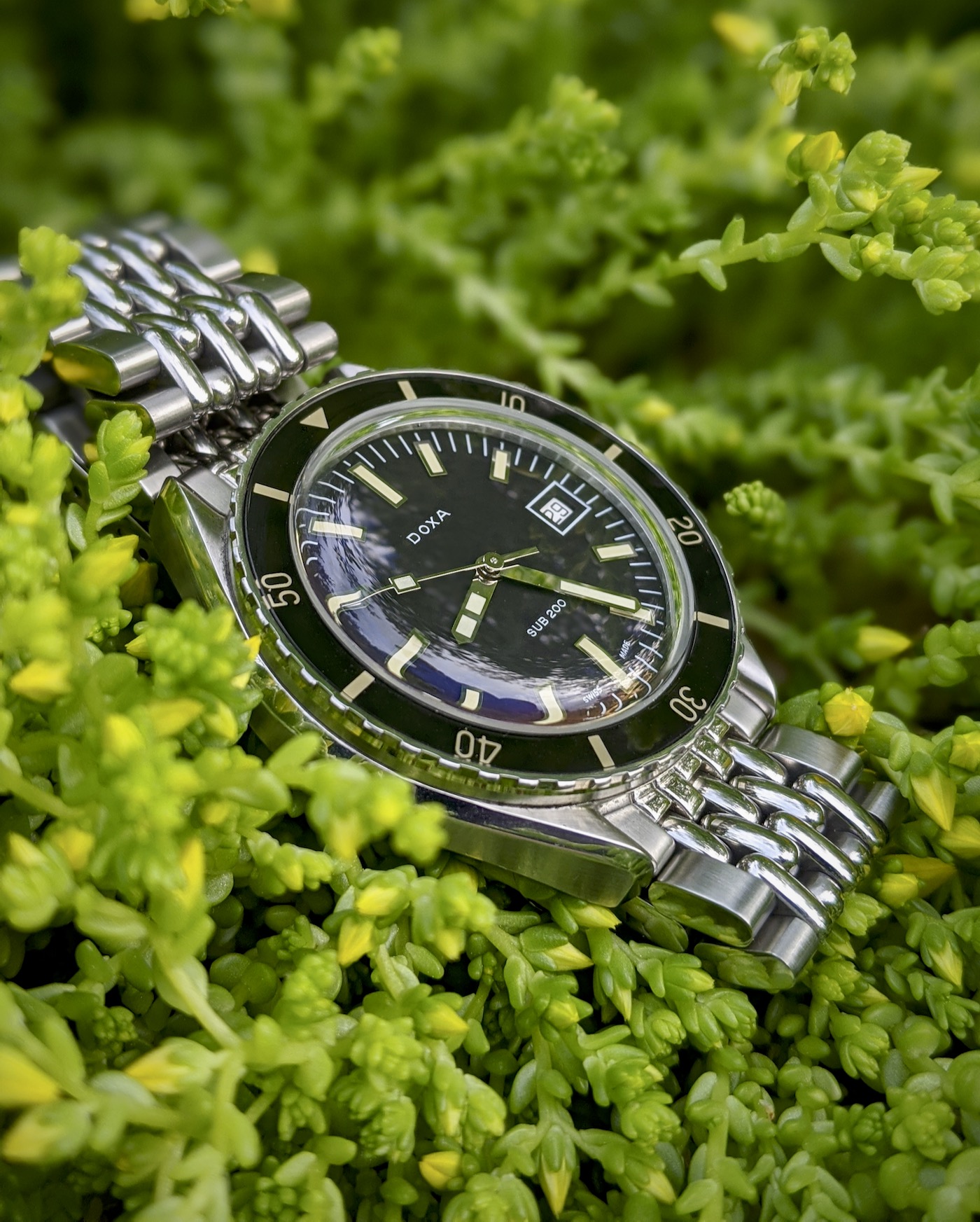
Box sapphire crystals that mimic the acrylic crystals of vintage watches have become extremely popular over the past few years, riding the neo-retro watch wave. However, not all box sapphire crystals are created equal. Some end up with so much distortion that the watch needs to be viewed head-on to read the time. The Doxa crystal is something special; it remains legible and instantly readable at almost all angles with just the slightest distortion when viewed at an oblique angle to give it the warmth and charm that’s so appealing in acrylic crystals. It’s exceptionally well-done. Complementing that beautiful crystal is a 120-click bezel with a sapphire insert and lumed markers — an excellent choice that extends the black and cream color scheme, providing a unified look.
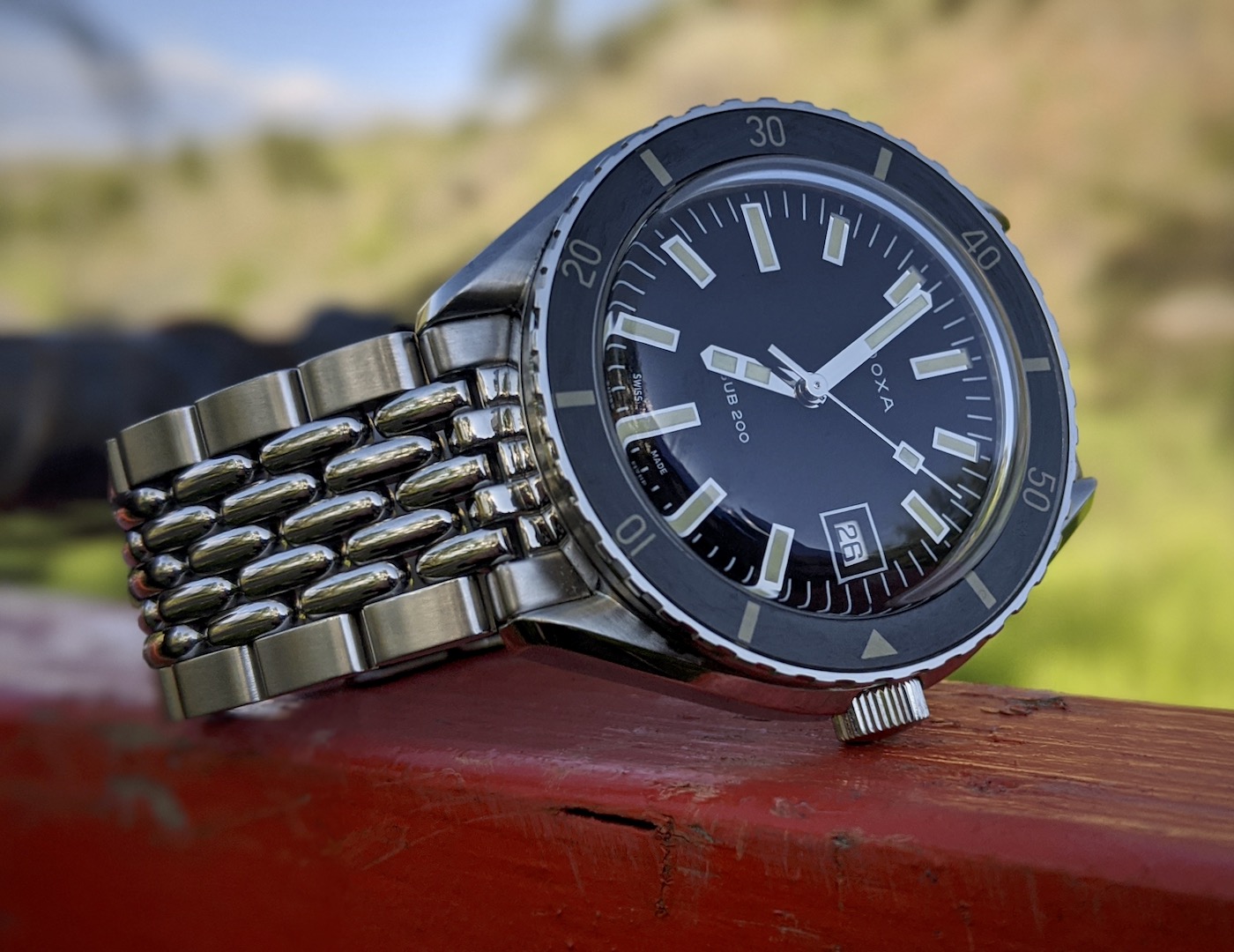
Powering the Doxa SUB 200 is the tried-and-true ETA 2824-2 automatic movement that features a 38-hour power reserve, date function, 25 jewels, beats at 28.8kbph, and has a custom decorated rotor hidden away behind the solid caseback. I have nothing at all to complain about with the movement — it’s the right choice at this price point and should run without trouble for years.
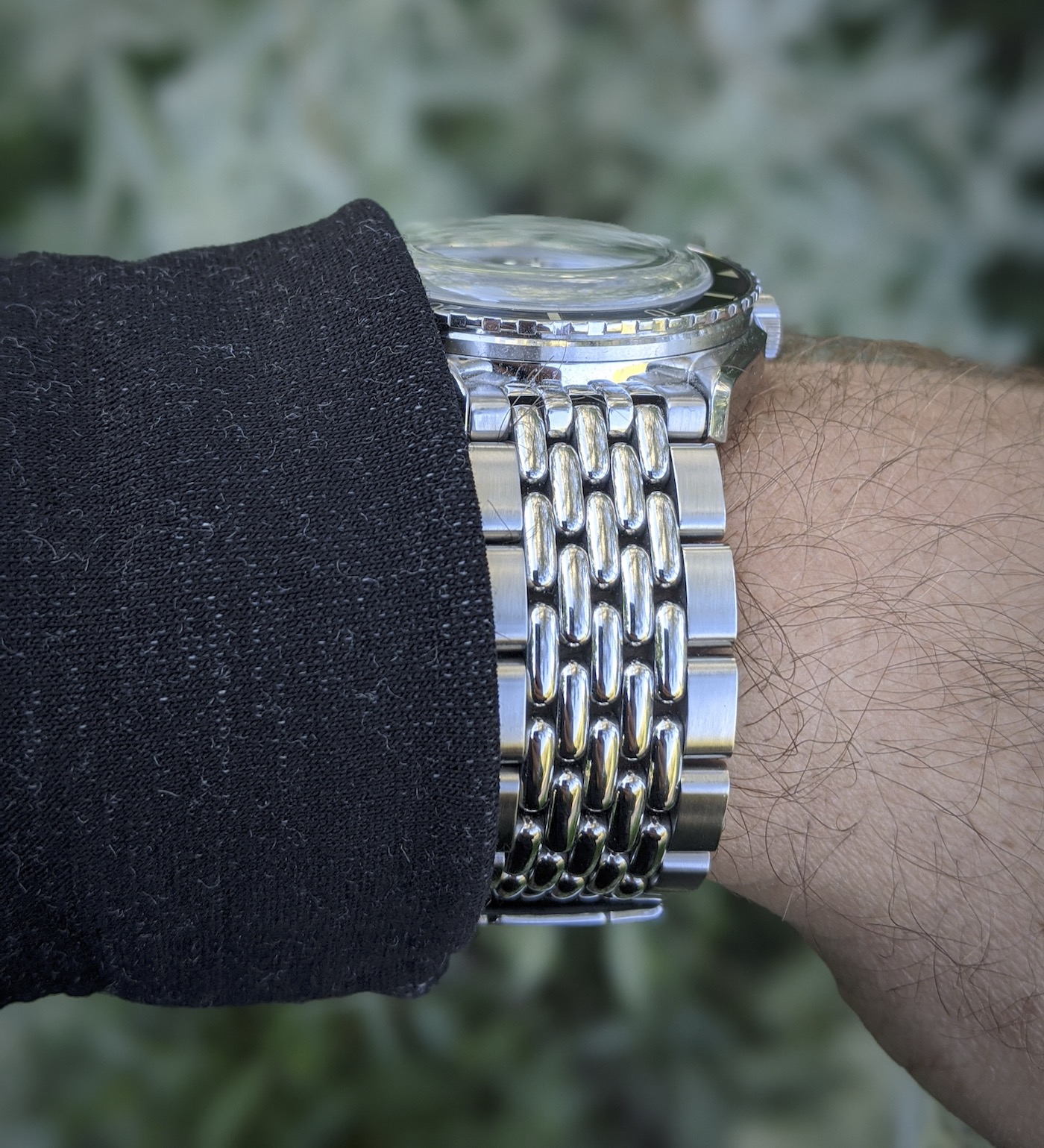
The beads-of-rice bracelet is a hallmark of Doxa’s professional divers, and the look is spot-on for the vintage diver aesthetic of the Sub 200. Had Doxa opted for a simpler, three-link bracelet on this piece, the SUB 200 would have been easy to overlook as another vintage diver in a roiling sea of faux-lumed throwback pieces, but the bracelet completes the look and makes the watch instantly recognizable as a Doxa. Sure, the high-polish center links are a bit blingy and the bracelet itself is a loud, funky look, so it won’t be for everyone. But if you appreciate the aesthetic, you’ll love the bracelet on the wrist, as the small links result in excellent articulation and a buttery feel on the wrist. I can’t see switching away from the bracelet on this piece. Top marks for comfort and the bracelet completes the look of the watch. That said, there’s also a rubber strap option that integrates seamlessly with the case. Unfortunately, buying one as an extra option to complement the bracelet will set you back $250.
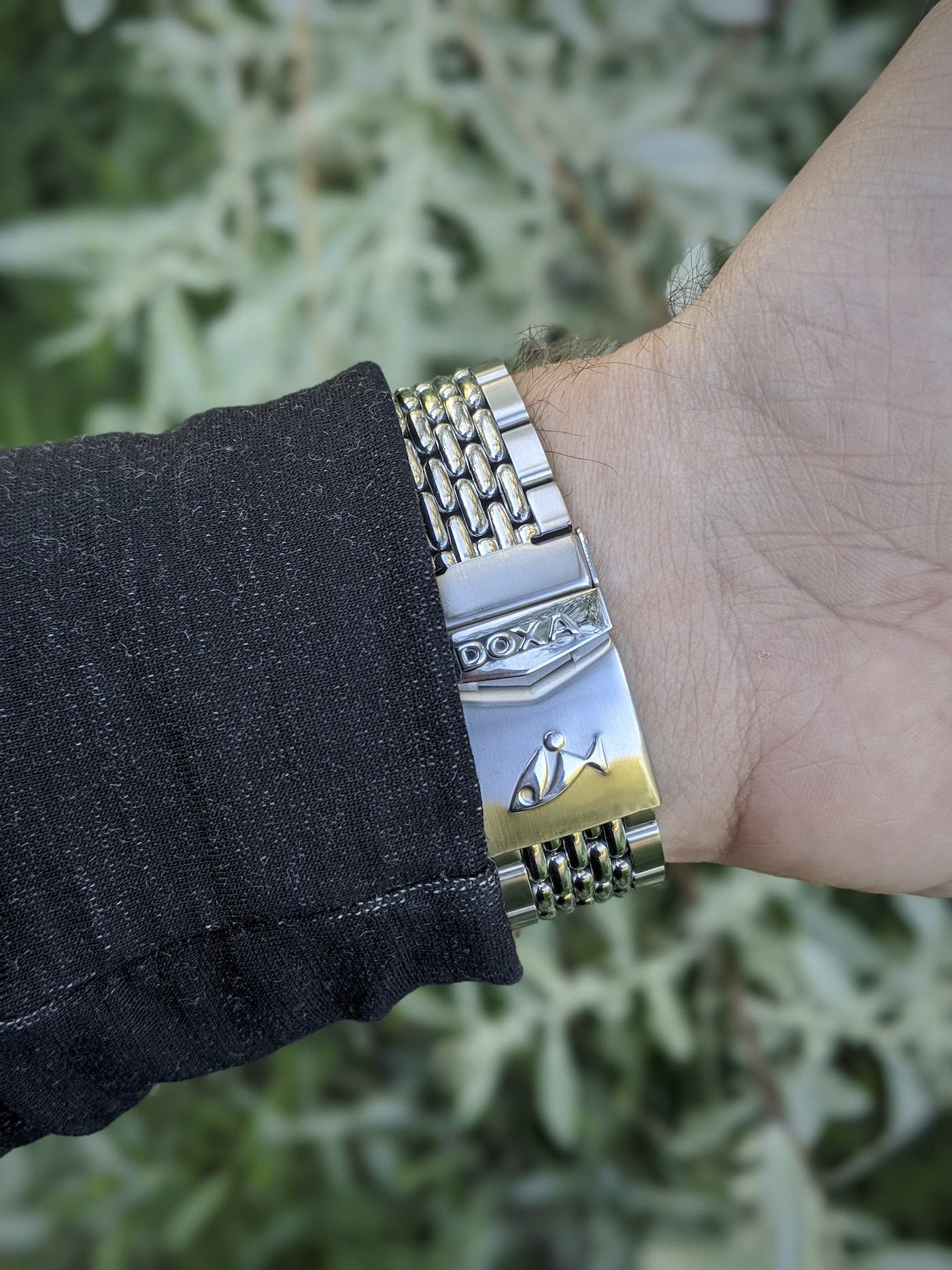
That’s not to say that all is roses with the bracelet. There are a couple of issues. First, and this is a minor one, the end links are short and stubby, so when they meet the case, the end links look undersized, as they don’t flow with the top of the lugs. I got over this quickly and chalked it up to a design quirk. My only real complaint is the stamped clasp. It’s perfectly functional and has micro-adjust holes, so it works as expected. However, at the $1000 price point, we’re seeing many brands step up their clasp game, offering solid, milled clasps and on-the-fly micro-adjust. The clasp doesn’t take away from my enjoyment of the piece and it could be argued that the stamped clasp is more appropriate on a vintage-inspired diver, but I still would have preferred something more solid.
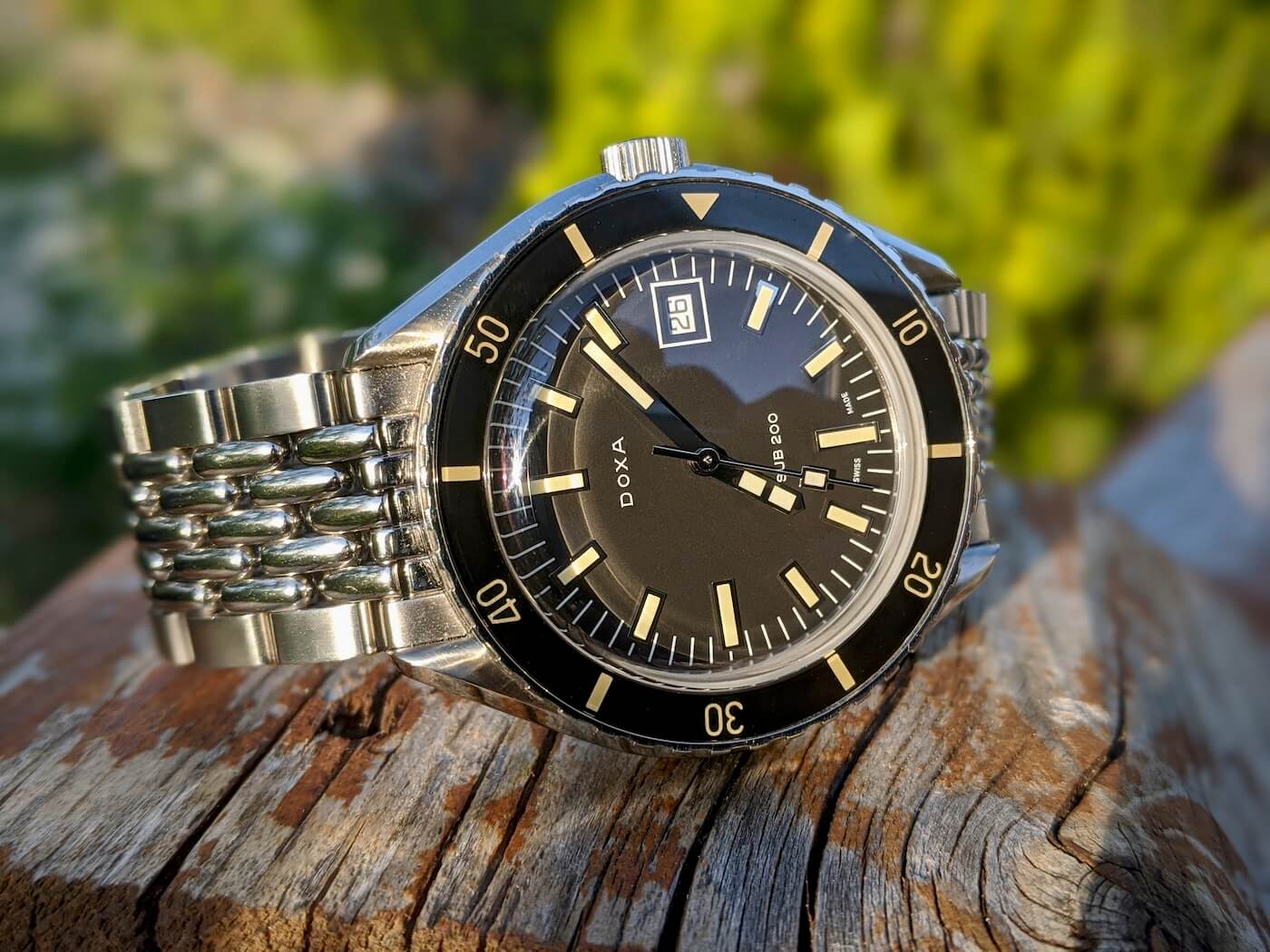
When it comes to alternatives, there’s no shortage of neo-vintage divers on the market. For instance, you could opt for one of the watches that was at the forefront of the current retro diver craze, the Oris Divers 65. Available in a wide array of colorways, dial options, sizes, and case materials, the Divers 65 is a hard watch to overlook and many models offer a more classic, subdued aesthetic — albeit at almost double the price. On the slightly more affordable side, the Baltic Aquascaphe has a similar vintage aesthetic, comes in a slightly smaller 39mm case, and features many of the charming attributes that make the SUB 200 so appealing, including the sapphire bezel, double-domed box sapphire crystal, and even a beads-of-rice bracelet, for several hundred dollars less. Or you could take a look at offerings from Chrisopher Ward, Seiko, Longines, Yema, Lorier …the list goes on.
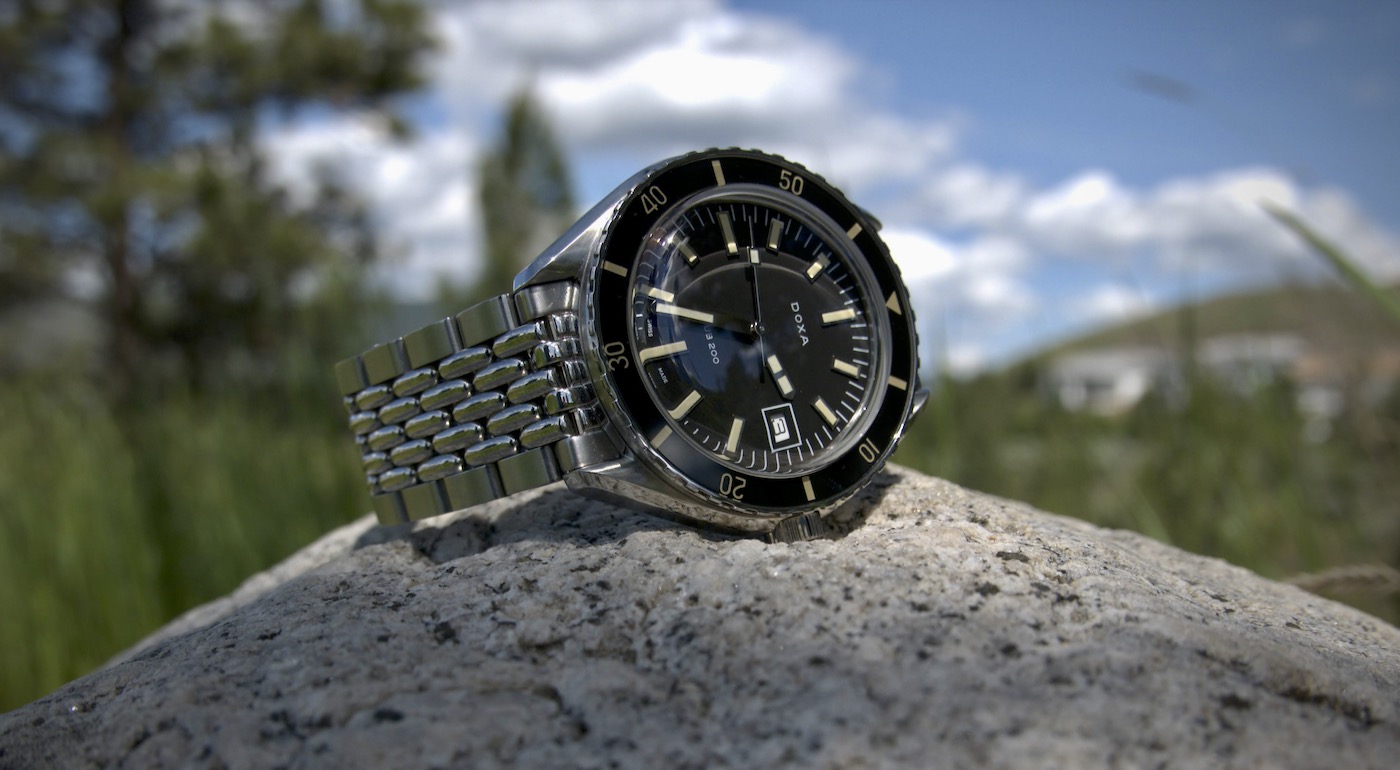
Though there are plenty of options when it comes to vintage-inspired divers, there’s really nothing quite like the Doxa Sub 200. It’s an incredibly appealing option at the $1000 price point for anyone looking for a versatile, fun, vintage-inspired diver. And, if you’re looking to add some color to your collection, the Sub 200 lineup has you covered. The case execution is excellent, the watch is a pleasure on the wrist, and it comes from a brand with a storied history in diving. And for those who aren’t quite willing to take the plunge (both financially and aesthetically) into Doxa’s now-classic professional divers, the Sub 200 is a Doxa for the rest of us. The Doxa Sub 200 retails for $990. More information can be found at doxawatches.com.
Necessary Data
>Brand: Doxa
>Model: Sub 200 “Sharkhunter”
>Price: $990
>Size: 42mm-wide, 14mm-thick, 46mm lug-to-lug, 19mm lug-width
>When reviewer would personally wear it: Almost anytime, but it’s hard to beat as a sporty summer watch.
>Friend we’d recommend it to first: Anyone who appreciates that aesthetics of vintage divers and is looking for a funky but versatile watch from a brand with a storied history in diving.
>Best characteristic of watch: On-point vintage styling, excellent case execution, and the beads-of-rice bracelet.
>Worst characteristic of watch: Weak lume, 19mm lugs, and stamped clasp.

